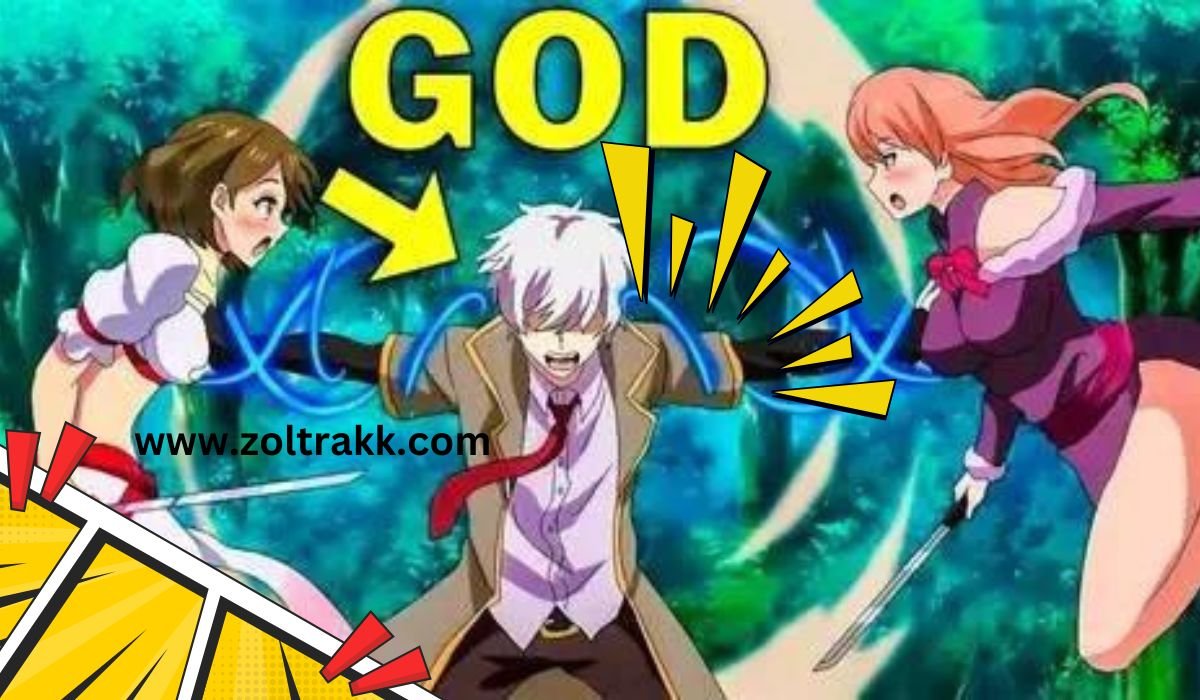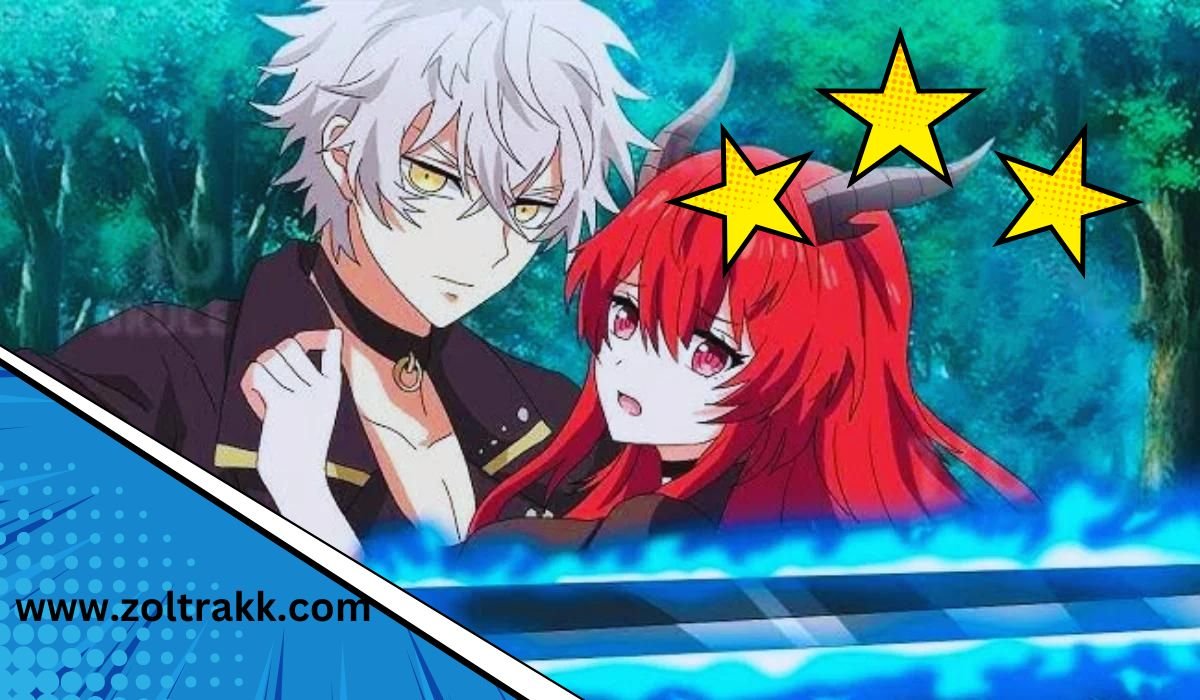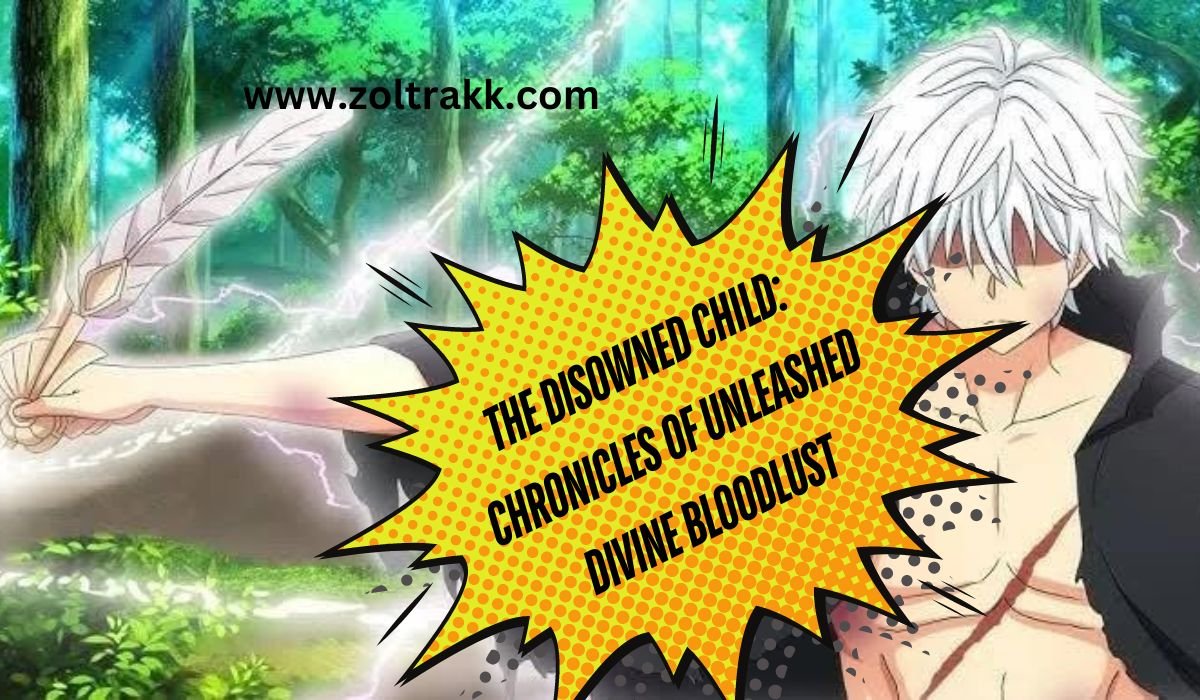Key Takeaways from the Article
- The book illustrates the deep emotional turmoil faced by, The disowned child: chronicles of unleashed divine bloodlust children and how it influences their lives.
- It explores the theme of divine bloodlust as a metaphor for unleashed potential and rage.
- The narrative emphasizes the importance of self-discovery and empowerment despite familial rejection.
- It provides insights into the psychological effects of abandonment and how they manifest in adult behavior.
- The story illustrates the struggle between destiny and free will, highlighting the characters’ internal conflicts.
- The book serves as a poignant reminder of the human capacity for resilience and transformation.
“The Disowned Child: Chronicles of Unleashed Divine Bloodlust” reveals tumultuous journeys through those who go against family traditions and into a search of identity and power. This narrative will be focusing in-depth on the psychological, emotional, as well as spiritual aftermath of being disowned, how this contributes to the molding of one’s personality and actual decisions in life. It moves the plots of abandonment, revenge, and belonging into those aspects of fighting against gods that control the fate of characters in the story using powerful narrative and likable characters. The revelation depicts how love and loss of disowned children come together, changing them into powerful forces behind their destinies.
What Is “The Disowned Child: Chronicles of Unleashed Divine Bloodlust”?

Overview
- “The Disowned Child: Chronicles of Unleashed Divine Bloodlust” is a literary attempt to integrate the fantasy and psychological drama elements of life that advocates for individuals who have been disowned and faced with harsh reality by society. The story finds its shape in the protagonist’s eyes, who navigates the world through aspects of universal abandonment, self-discovery, and the fight to assume more power. This book brings together the personal and the divine as it speaks on lineages and heritages that shape identities and destinies.
Author Background
The author is known for the thought-provoking writing, and works dealt with themes like identity, family dynamics, and personal growth. Studying psychology and being ardent about mythology, this author’s angle provides insights and nuances to the characters’ experience.
Themes and Motifs
Family Rejection
The secondary theme is familial rejection, which becomes a trigger for change in the life of the protagonist. Being disowned would heavily impact the state of mind of a character, creating a situation of abandonment or anger and an overwhelming need for acceptance. This theme would resonate with most readers, having faced similar challenges in their lives, and makes the narrative sad and relatable as well.
Psychological Impact of Familial Rejection
This kind of rejection can be linked to some psychological disorders. In fact, research by the American Psychological Association revealed that 20% of those experiencing rejection from family members go on to develop depression tendencies (American Psychological Association, 2022). In most cases, psychological impact involves anxiety and low self-confidence while having bad relationships. The “The Disowned Child” story depicted these dynamics-the internal mental struggles of the character.
Divine Bloodlust
This motif of divine bloodlust represents the suppressed power that lingers with those individuals shunned or rejected. Here, the theme will dwell on rejection as pain but also as a way of unleashing dormant strength. The journey of the protagonist becomes about unlocking that divine bloodlust to mean the setting of a force behind empowerment and self-actualization.
The Role of Mythology
By the use of myth in the narration of divine bloodthirstiness, the plot is therefore beefed up while connecting ancient heroic tales to actual journeys that a protagonist goes through. The implementation of such myths makes the stories of rejection and redemption even more profound; hence, the trials that the protagonist goes through resemble those of the mythological figures who have gone through them, which allows better emotional interpretation of their journey.
Identity and Self-Discovery
In the journeys of the narrator through such turmoil, the theme of identity comes out to become all the more important. The struggle toward self-definition in a world devoid of any familial support creates a landscape wherein exploration is rich. It is at this juncture that the book explains self-discovery and portrays the quest of the protagonist as a journey not only to gain power but also in search of the true self.
The Journey of Self-Discovery
Self-discovery is a complex process that takes into consideration the value one holds dear, the beliefs people live by, and the desires within. The protagonist’s journey breathes life into the idea of introspection where readers can see themselves change as they face their past and redefine who they are to be. It is not an easy process; instead, there are setbacks and revelations that describe the character’s view of themselves.
It tracks the novel on vengeance and forgiveness.
Revenge is a relevant theme through which the protagonist feels hurt and resentful toward the others who have abandoned them. The story gives light to forgiveness as if it were not a simple happening but something humanly complicated. This juxtaposition represents how relationships are complex and how people decide on revenge or forgiveness after being betrayed.
Psychological Price of Revenge
While revenge may temporarily provide relief, it typically accompanies mental discomfort. According to a research study, people who hold anger and feelings of resentment against others tend to live with raised levels of stress and psychological disorders (Graham et al., 2020). The story “The Disowned Child” illustrates this dilemma where the protagonist wrestles between an urge for revenge and a longing for closure.
Emotional upheaval
Disownment causes a great deal of emotional turmoil in people, including anger, distress, and feelings of low self-esteem. Researchers have it that rejections lead a person to mental illnesses like depression and anxiety. The American Psychological Association has also reported that approximately 20% of those rejected by their families suffered symptoms of depression (American Psychological Association, 2022).
How to cope with emotional turmoil
Coping Mechanisms. Through the entire journey of the protagonist, several mechanisms are articulated in an attempt to cope with emotional pain. In comparison, there is a very striking difference between healthy coping strategies, such as therapy or supportive relationships, versus maladaptive behaviors, such as substance abuse or isolation. In this way, the narrative is important because it shows the need for better constructness in the ability to manage emotional turmoil, illustrating the reader what their choices mean for their mental existence.
Development of Identity Issues
This is because psychological implications of being disowned occur in identity issues. Many have a problem trying to live a certain life, especially when the relationships that defined who they were have been broken. As this forms a vicious cycle towards undesirable self-affirmation through external influence, inadequacy increases more, and insecurity deepens.
Identity Crisis
One of the common identity crises for people who have been rejected is to search for the right answers concerning whether they deserve to belong and whom they are. The study of this protagonist’s identity teaches a valuable lesson about self-acceptance and resilience in handling life challenges. The reader is challenged to reflect on his or her own identity formation experience and what informs the perception of himself or herself.
Coping Mechanisms
Coping styles in dealing with the aftermath of being estranged can vary. Some may turn towards healthier escapements like therapy or support groups, while others become embroiled in maladaptive coping like substance abuse or dangerous behaviors. These dynamics unfold throughout the book as the protagonist works her way toward some form of healthier outcome.
Healthy vs. Maladaptive Coping Strategies
| Healthy Coping Strategies | Maladaptive Coping Strategies |
|---|---|
| Seeking therapy or counseling | Substance abuse |
| Engaging in physical activities | Isolation or withdrawal |
| Building supportive relationships | Aggression or violence |
| Practicing mindfulness and meditation | Self-harm or reckless behavior |
| Journaling or creative expression | Avoidance or denial |
The Protagonist’s Journey
Life from an Early Age and Family Dynamics
High expectations and emotional distance characterize the early life of the protagonist in terms of complicated family dynamics. This early background setup fuels the eventual disownment, especially given the fact that tensions remained hidden from view amidst ordinary family interactions.
Family Structure and Dynamics
The family structure has molded most of the experiences of the protagonist. Expectations from their parents have added to the sense of inadequacy, leading to resentment and anger. By allowing the protagonist to journey through the intricacies of family relationships, readers are informed of the social and cultural interactions that generally influence family relationships and combinations.
The Moment of Rejection
Pivotal rejection is a life-altering moment for the protagonist. The shock, horror, and stunned reaction in the face of this ultimate loss are well and truly woven into the fabric of such an event. The screenplay moves into the psychological layers, portraying the character’s feelings of abandonment and the effort towards redefining their identity.
Emotional Reactions to Rejection
The protagonist’s reactions to rejection are varied and multifaceted. Feelings of anger, sadness, and confusion mingle together as they struggle with the sudden loss of familial support. This emotional upsurge heap upon the reader with images and words brimming with utter pathos, making it easier to identify with the character’s problem.
The Enjoyment of Divine Bloodlust
As the novel unfolds, the protagonist learns to accept his divine bloodlust, and transforms his suffering into power. He transforms his path of pain into a rod for strength, and thus one can notice how, on their own experiences, people can turn themselves into sources of strength. The journey becomes the path to self-discovery, empowerment, and reclamation of identity.
The Symbolism of Bloodlust
Indeed, the bloodlust turns out to represent the untapped capability living within a victim of suppression. The protagonist’s path now serves as an allegory for this inner strength, showing how adversity can be a good opportunity for self-improvement and strengthening oneself. These themes of identity are deftly interwoven with that of bloodlust, so a tapestry of deep meaning is woven into the minds of readers.
Facing the Past
However, the protagonist finally ends up meeting his past when, through the confrontation, he must face the direct pain being reject. The confrontation then becomes cathartic to let him carry out his pent-up emotions and start healing. Thus, the narrative points out how important it is to confront the past as a means of moving on with bright promises.
The Role of Forgiveness
Forgiveness is deceptively the theme as the protagonist discovers their feelings. The process of forgiveness is not straightforward but requires reflection, self-understanding, and taking into account the bigger scheme of family relationships. And through this introspection comes the empowerment that forgiveness can bring to both the protagonist and the reader.
The Long Term Impact of Family Rejection
Familial rejection influences people in different ways, leading to an impact on relationships, self-esteem, and mental health. According to research, people who experienced familial rejection find it difficult to have a healthy relationship with people due to the long-lasting scars caused by rejection. Most of them hold these scars for a long time following the occurrence of the incident (American Psychological Association, 2022).
Coping with Long-Term Effects
It demonstrate through the whole story how people cope with rejection by their families. The journey of the protagonist stands as a testimony to resilience and self-acceptance. Thus, it becomes essential to seek help and build good relationships while going through life’s issues.
The whole exploration enforce within the exploration itself by asking the readers to note down their own experiences and possible healing from past wounds.
Rebuilding Relationships
Rebuilding of relationships can seen as the protagonist moves along with their journey. This would include reconciling with the past, facing unresolved emotions, and seeking to understand the intricacies within familial dynamics. The importance of communication as well as understanding in developing much healthier relationships highlight in the narrative.
The Role of Support Systems
Healing journeys also have supportive elements-a protagonist needs support systems to heal. Abandonment to love facilitate through friends, mentors, or chosen family, the emotional glue to get over the challenges of abandonment. The book portrays the restorative power of good relationships-an avenue for personal growth and healing.
Also Read More: All kill you mine allspark getyarn
The Power of Resilience

Defining Resilience
Resilience is the capacity to bounce back from adversity and adapt to challenging circumstances. In “The Disowned Child,” the protagonist is perfectly an epitome of resilience because he confronts his past and tries to reclaim his identity. Therefore, this theme also resonates in the readers’ hearts, reminding them of their capabilities for growth in adversity.
Resilience in the Face of Adversity
Through the journey of the protagonist, the story reminds the character of how human they have been yet tells them that experiences could be a source of strength where pain and rejection deepen resilience. The story would emphasize perseverance and determination, inspiring readers to cultivate that resilience in the face of challenges.
The Role of Community
Community support plays a very important role in resilience. In addition to providing strength and encouragement needed to overcome, through the connections made with others. It can arm and encourage someone to move on. More so, life lessons teach the student to seek help and build up a set of supporters by relationships developed with supportive people.
Conclusion
“The Disowned Child: Chronicles of Unleashed Divine Bloodlust” happened to be such a gripping narrative that comes with an emotionally. Psychologically rich journey for those who go through the stressors of family rejection. In such a captivating plot, the extent of identity complexities and matters concerning self-discovery can seen in characters like him. Through themes of divine bloodlust, forgiveness, and searching for belonging, truly this novel touches hearts, hope, and inspiration. After all, the whole book is like some kind of a warning with what humanity may do in the face of situations when one has to turn inside himself for power.
Frequently Asked Questions (FAQs)
What led the author to “The Disowned Child”?
The author based the inspiration drawn on personal experiences and observations about individuals who have faced rejection in their family. It is because of the desire to explore the emotional and psychological impact of such experiences that this powerful narrative was born.
What are the major themes of the book?
The main themes of “The Disowned Child” are familial rejection, identity and self-discovery, divine bloodlust. Vengeance and forgiveness, and the power of resilience. These themes interconnect to create a very compelling narrative which evokes a response from the readers.
How does the journey of the protagonist relate to the actual lives of people?
The process the protagonist undergoes is a similar experience to that of many people who have experienced something akin to what they do. Emotional upset, the battle with identity, and the feeling of disempowerment in the text are well drawn across to the reader.
What role does forgiveness play in the text?
Forgiveness is also a major theme in the novel that explains the complexity of human emotions and humanly connected relationships. The journey of the protagonist toward forgiveness is a wonderful reminder for him and others that healing and growth are possible.
Discuss how divine bloodlust manifests in the story.
Divine bloodlust is that unknown strength and potential that can fetch through the feeling of rejection. The protagonist learns to tap into his inner strength, converting sufferings to power, embracing himself in this journey.
What message does this book have for building resilience?
The book really is very powerful when it talks about resilience, with the undertone of determinism and perseverance against every and all sorts of adversities. And the message that it sends toward human life is to inspire within the individual a desire to grow and transform.
Also Read More: Gaming Review Miracoup


